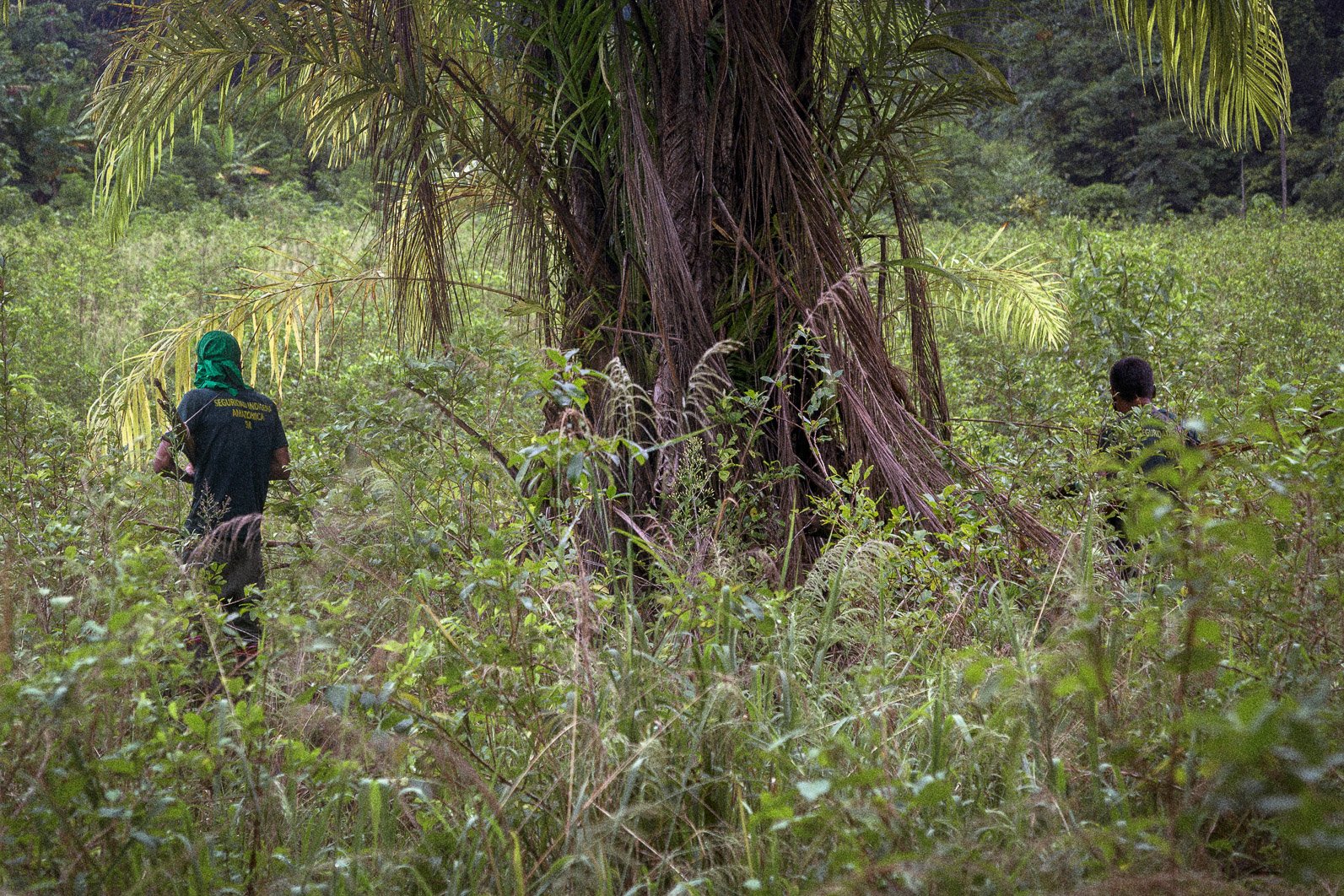The still arrow in the forest with no trees
The defence of ancestral territory in the Peruvian Amazon
“These arrows are not symbolic. I have been hunting animals forever, with these arrows I can kill”, says Jorge Puente.
In the night between 22 and 23 March, Nusat Parisada Benavides (42), her husband Berti Antaihua Quispe (42), and Gemerson Pizango Narvaes (46) were murdered in the Puerto Inca area, in the Huánuco region. Those responsible for their death have yet to be found.
Benavides, Quispe and Narvaes were part of a native Asháninka community, whose ancestral territory is in the forests of Huánuco: Peru is the second-largest cocaine producer in the world after Colombia and it is estimated that the Amazonian basin of Pichis-Palcazù-Pachitea, of which the Asháninka territory is part, is the second production area of Peru. The Asháninka are often subject to kidnappings and assassinations because they oppose the illicit cultivation of coca, the construction of illegal gold mines and deforestation. They have been tenacious defenders of their ancestral territory for many years an in the late 1980s they founded the Ejercito Asháninka in order to stem criminal activities and violence.
In 1989, the Tupac Amaru Revolutionary Movement (MRTA) assassinated Alejandro Calderon, the founding leader of the Asháninka Nationality Association (ANAP) because of his work in titling the territories that stood in the way of the illegal rule of Puerto Bermudez. The Ejercito Asháninka armed itself with rifles, bows and arrows in order to repel the MRTA and other armed groups occupying the region.
The Comisión de la Verdad y Reconciliación estimates that between the 1980s and the 1990s around 10,000 Asháninka were forced to leave their territories and that another 6,000 died. During these years of violence, 34 communities have disappeared.
Today, due to the increase in drug trafficking, illegal mining and illegal logging, the Asháninka population feels once again that their rights are being violated: they lack titles on their territories and there are only a few public investment projects.
For all these reasons, in October 2021 the ANAP, which represents more than 12,000 indigenous people, declared that the Asháninka would return to arms to tackle crime and drug trafficking.
Following these statements, numerous Asháninka communities in the Huánuco, Junín and Pasco regions have begun to organize armed groups.
In this project, I follow the activities of one of them. The Seguridad Indigena Amazonica (SIA) was formed between 2021 and 2022 and operates mainly in the area north of Puerto Inca, in the rainforests east and west of the Pachitea River.
The main activities of the SIA are the patrolling of the territory and the defence of local communities from night attacks. In recent months, they have identified seventeen illegal gold mines and three coca fields; several times, they have also had direct clashes with miners and drug traffickers. Their dedication to the cause is absolute, but without a more decisive intervention by the central government, the occupation of their territory could soon become complete.
Click on the images below to see them full screen with captions:



























